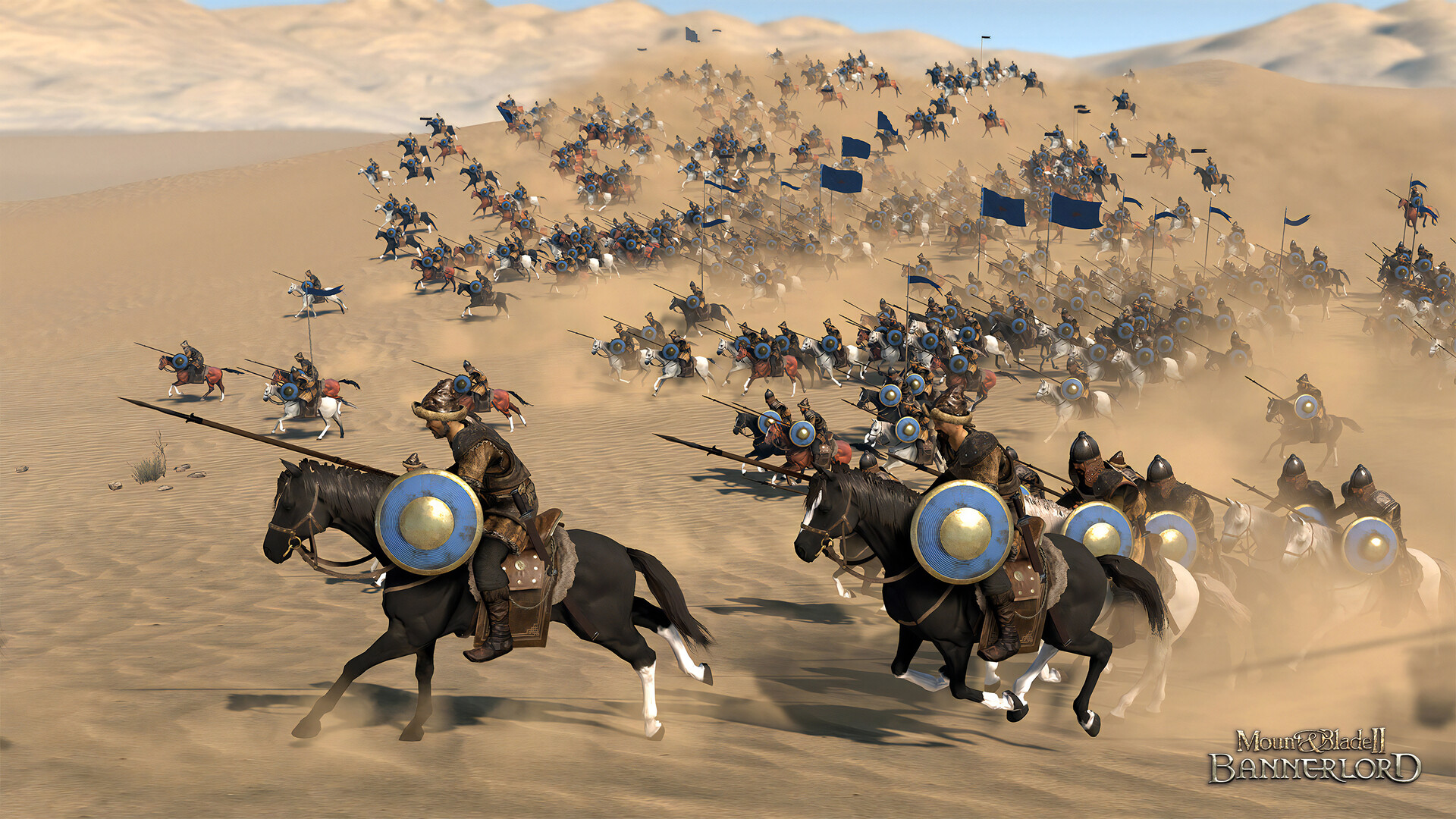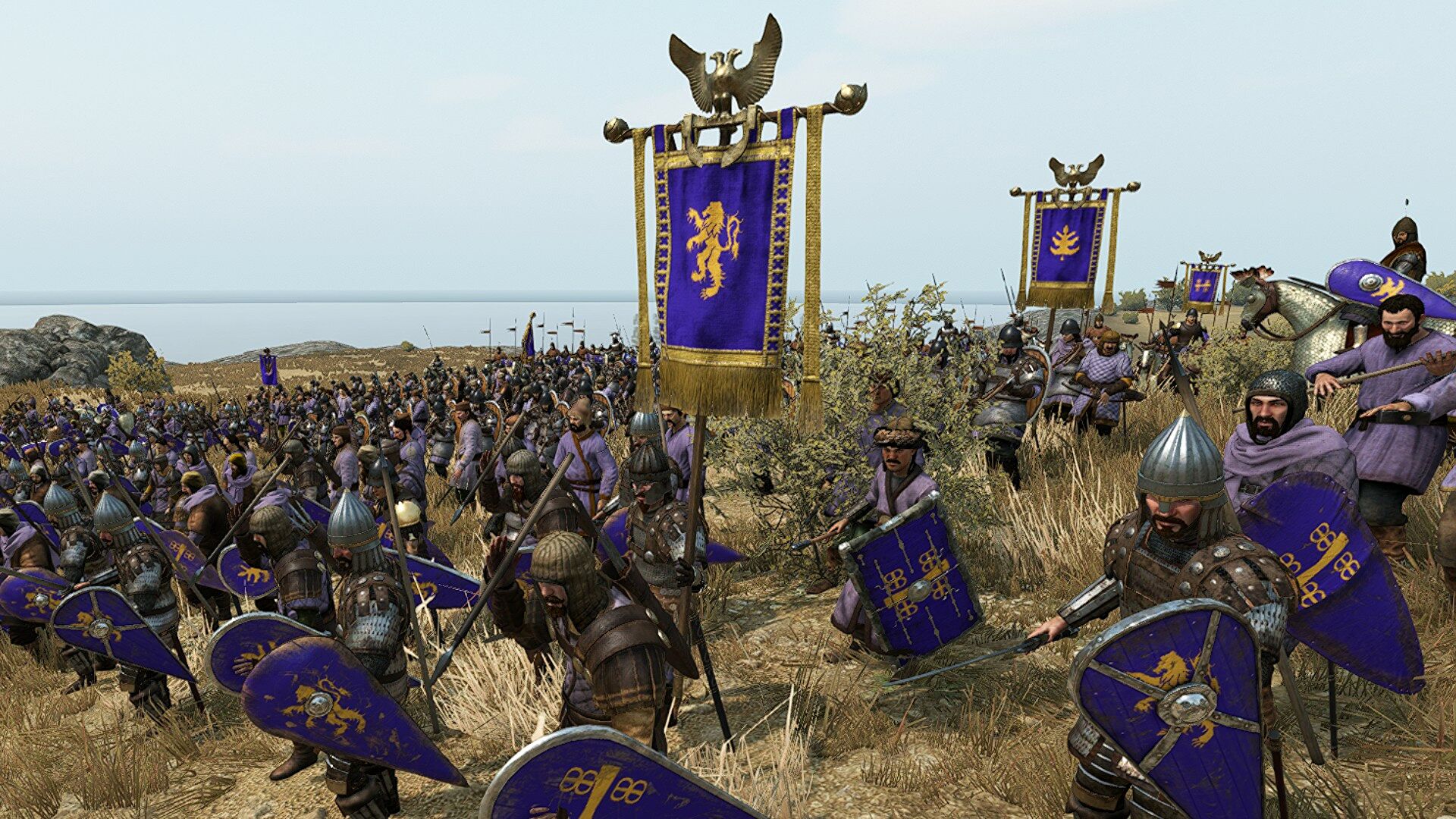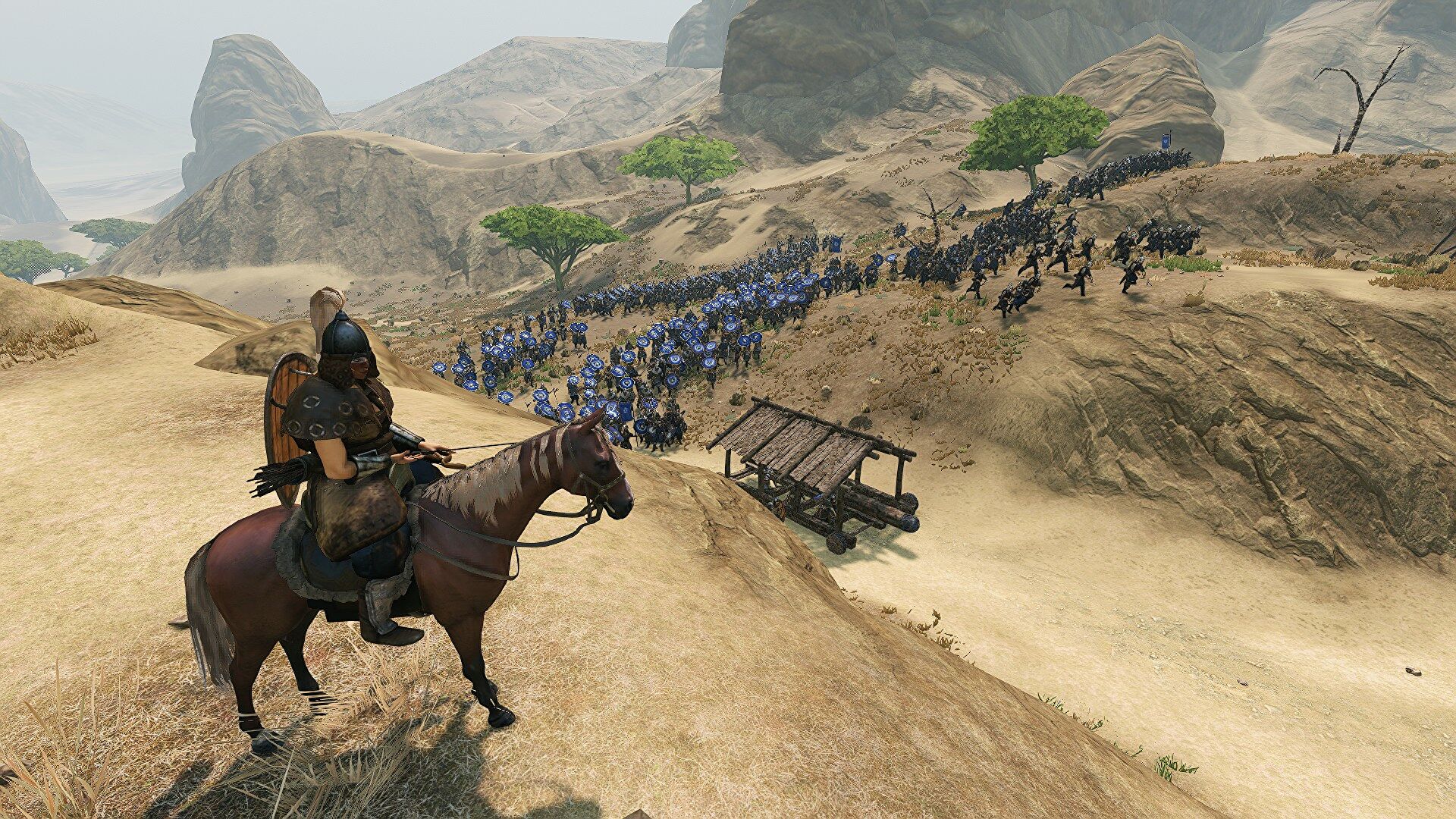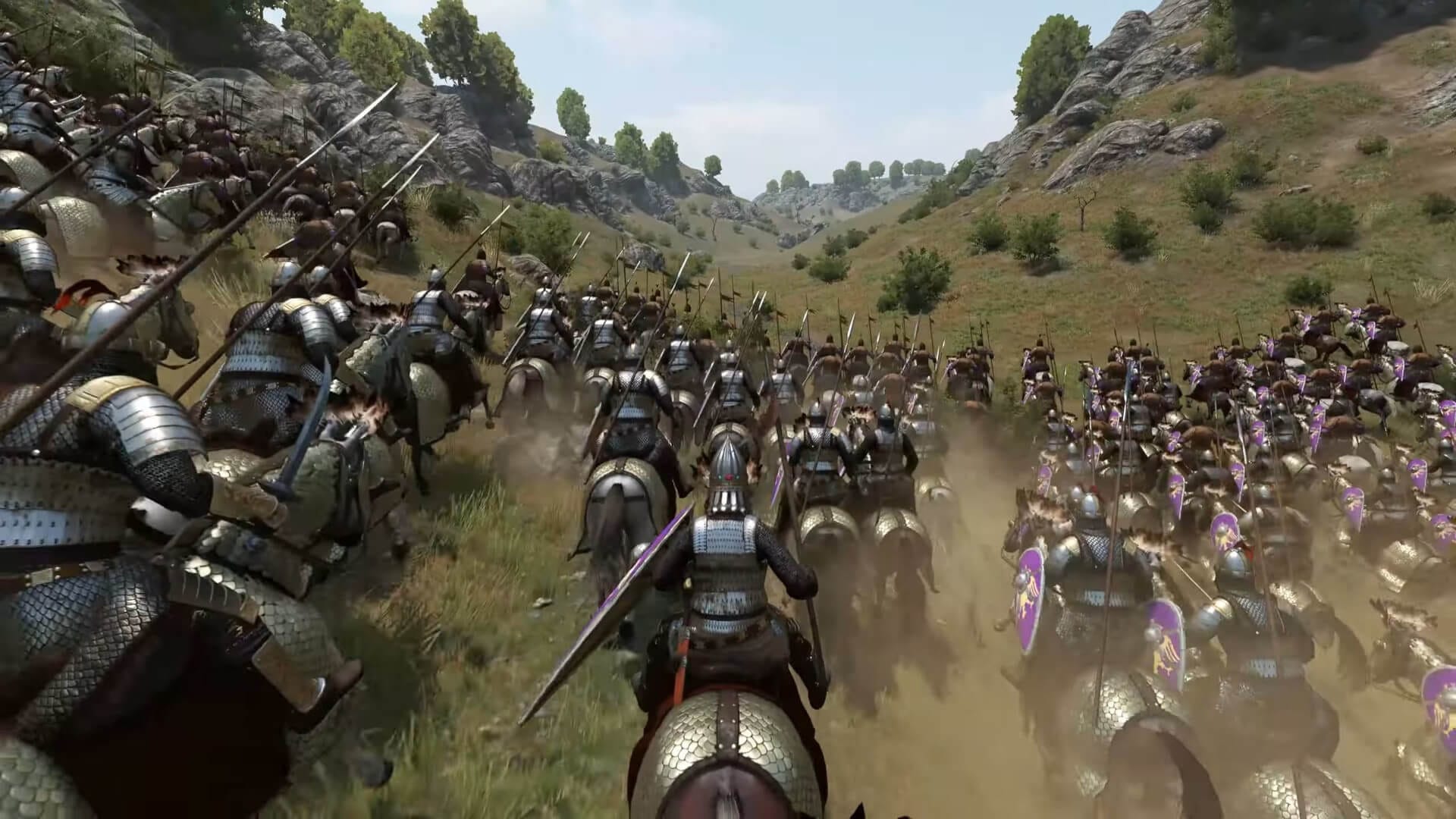Mount and Blade II Bannerlord is a bit too big for its boots – but my, what fancy boots they are!
When I was still a wee lad in short trousers, I was amazed by several things — video games, movies, chess and mediaeval warfare. As I played basic 8-bit games like North vs South on my NES and watched movies like Braveheart, I dreamed of a future in which photo-realistic video games would bring my favourite battles to life. Have no doubt; Mount and Blade II: Bannerlord achieves this in ways I never could have imagined.
Of course, there have already been several games in the Mount and Blade series (albeit only one that made it to console) but none have had the scale or detail of Mount and Blade II: Bannerlord. Battles can take place between armies of up to 1500 warriors on each side, and the battlefields vary from desert hills to mountains, forests and grassland — but what really impresses are the city and town siege maps.

With ramparts to climb, doors to batter down, siege engines firing both towards and from the battlements and AI that seems to approach the walls in good order and with some kind of sense, these events are a sight to behold. Three or four ranks of armoured soldiers, shoulder to shoulder and twenty men wide marching forwards with shields held high as a siege tower trundles ahead of them — what a sight!
During battles like this, whether skirmishes between a few horsemen and some bandits or two conquering armies consisting of many individual companies, Mount and Blade II: Bannerlord is just incredible. The crash of a sword on armour, or the thud of an arrow hitting your shield, the feeling of backing away from several tough opponents slashing wildly for dear life — there is danger here, and excitement, and it looks and sounds and feels fantastic.

The combat system is based on simple inputs — with your left trigger either raising your bow or bracing your shield, and your right trigger plus a direction being used to slash, stab or bash depending on your weapon and the direction pushed. Mastering this slow and deliberate combat style is key to success in Mount and Blade II: Bannerlord because death comes quickly for the unprepared. Thankfully, a highly variable (and customisable) approach to difficulty scaling allows for anything between an absolute cake-walk and an almost one-hit kill instadeath nightmare.
Outside battle, Mount and Blade II: Bannerlord is a slightly different prospect. Your campaign will begin with the usual character creation — including a bit of background which will provide some starting statistics in the huge range of different focus areas. These areas link to everything from combat prowess and survivability to charisma, trade and leadership and whilst you may start out in a particular direction, you can always change it later by focussing on something else.

You’ll also set up some family members — in the main campaign these will include a “mature” brother (who is a double-hard bastard) and a much younger brother and sister who become integral to your early questing. Within four or five hours, these family members plus several companions will be fighting alongside you, governing your cities and castles, and running missions for you with local dignitaries, gang leaders and merchants.
Missions will be your main source of income during the first few hours, and Mount and Blade II: Bannerlord feels reminiscent of any classic sandbox RPG — go here and do a thing, recruit some men, take some goods elsewhere and trade them, chase some bandits, loot them, sell their stuff and so on. Things don’t really get interesting until you eventually join a faction — either one of those representing the crumbling (and definitely not Roman) Empire, or one of the “barbarian” factions that look greedily towards the Empire’s wealth.

Now, you’ll be able to join armies and after accruing enough influence, create them and call others to arms. This, along with continuous investment in your leadership skills, is what will enable you to access armies of the vast size I referred to earlier in this review. With four, five or six hundred men beside you, expanding control for your faction becomes a singular focus — can you take a castle with a two hundred man advantage, or is there an easier option further along the coast?
The truth is that everything outside of the battles in Mount and Blade II: Bannerlord only really serves to set up the battles themselves. Recruiting and gathering troops definitely does, and the accumulation of wealth only really serves to support the engine — and the bigger the army, the more expensive it is to maintain — and the more food it will need to feed it.

Management of cities is sort of interesting, but a few features hold it back — firstly, construction is extremely slow, and secondly, the loyalty of a city is massively dependent on your culture and that of the city you are managing. Take over a foreign city and no matter how much you develop it, you’ll be forever dealing with the potential of rebellion no matter how far you advance your Fairground (which is the only loyalty focussed building). You can hire a companion of the correct culture to help slightly, but as loyalty wavers, production ends, so for me most campaigns became a dull cycle of visiting a city, setting it to the equivalent of “bread and circuses” to build loyalty, trying to fund a Fairground building before loyalty drops again and then repeating.
There’s more outside battle that I don’t find particularly well implemented either. A number of interface issues are present — upgrading units is a bit fiddly, and any screen that needs the player to use the joystick as a mouse cursor can frustrate due to how slow it feels. Prisoner and inventory management can be irritating too, and even to this day I can’t work out how to dismiss a companion that I don’t want to keep around any more. It’s not all bad though, and I’m thankful that many conversations can be skipped to by clicking on named characters, rather than having the player wander around the cities searching for folk they need.

Whilst on the topic of conversation and character development, this is where Mount and Blade II: Bannerlord is at its weakest. The interesting start of young siblings kidnapped and the promise of a place in history through locating an ancient banner soon fade away to the drudgery of rinse and repeat conversations with irrelevant people. Yes, they all have opinions of you, yes, you can execute a king or a prince, and yes these things all affect the world — but somehow you won’t notice them, and no one you meet will stick in the memory.
This is partly because the character visuals are absolutely awful. With a couple of hundred soldiers on the battlefield, Mount and Blade II: Bannerlord looks awesome. In conversation with a king that looks like a toad-headed mutant with nothing interesting to say, the whole facade quickly fades away… That is, of course, until you challenge him to fight you to the death — and within seconds you’re leading fifty heavy horsemen crashing into a compact shield wall.

Mount and Blade II: Bannerlord is the absolute best medieval battle simulator there is — certainly on console — without rival. I loved Chivalry II — loved it — but Mount and Blade II: Bannerlord is better. The battles are epic and amazing, and the sieges are simply incredible. The RPG and strategy elements though, are sadly lacking — and all I can hope for is that future watches will continue to develop these areas. What we have is a fantastic game of deadly knockabout that can consume hours and hours of your time, but what we are a few tweaks away from is an absolute classic.
Mount and Blade II: Bannerlord is out now on PC, Xbox and Playstation.
Comments are closed.